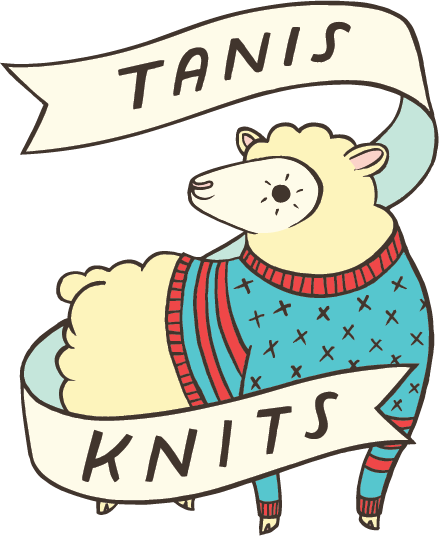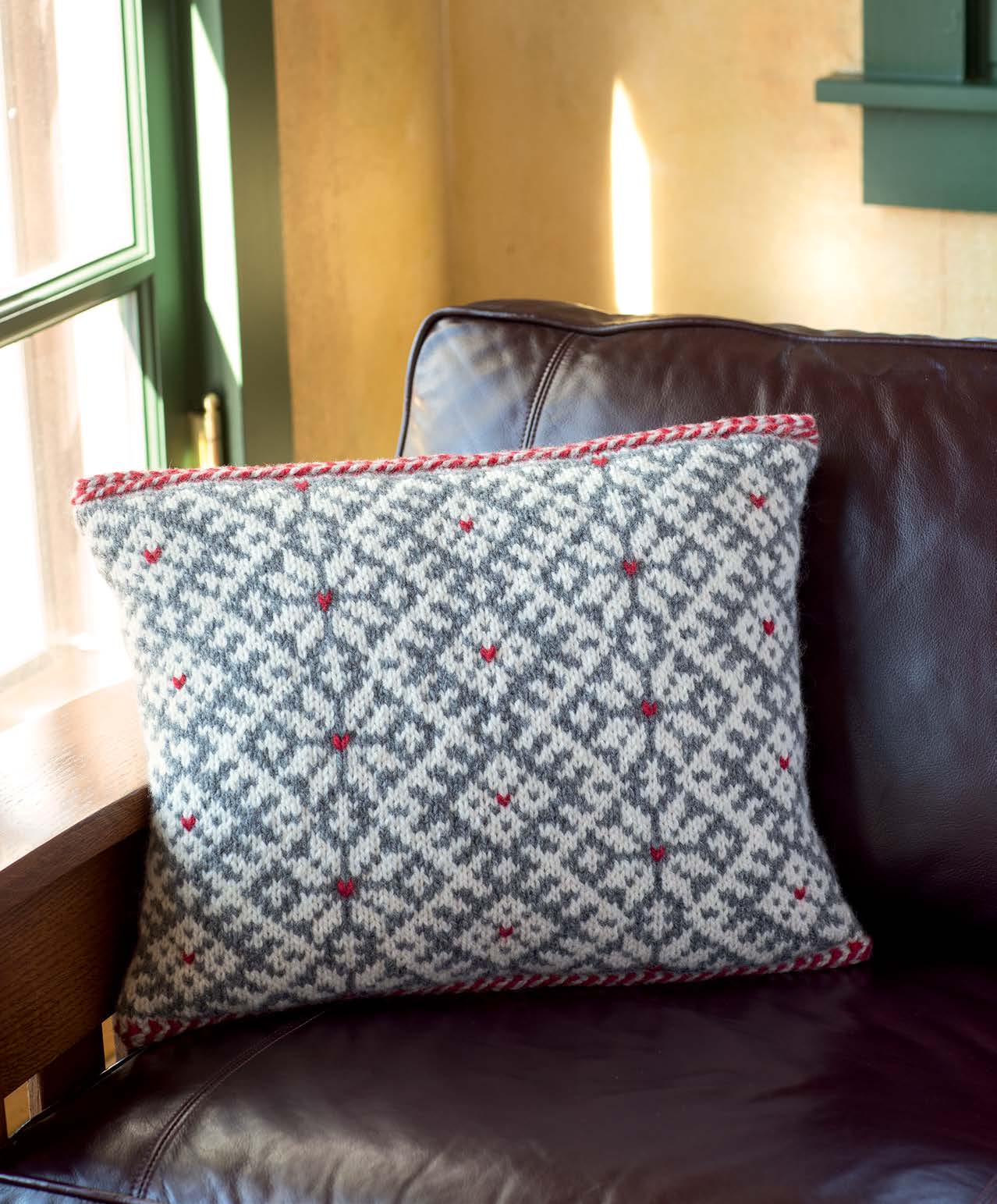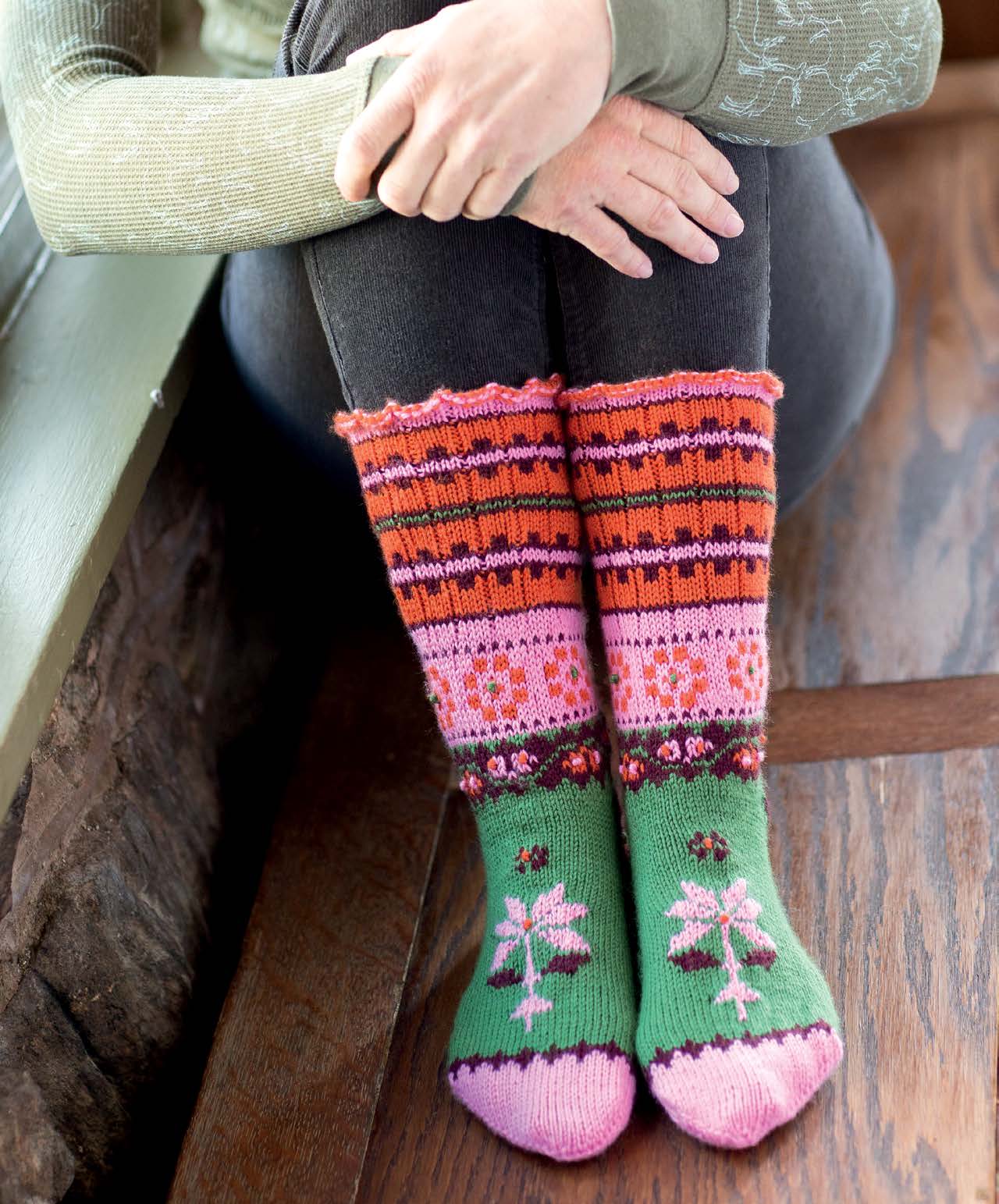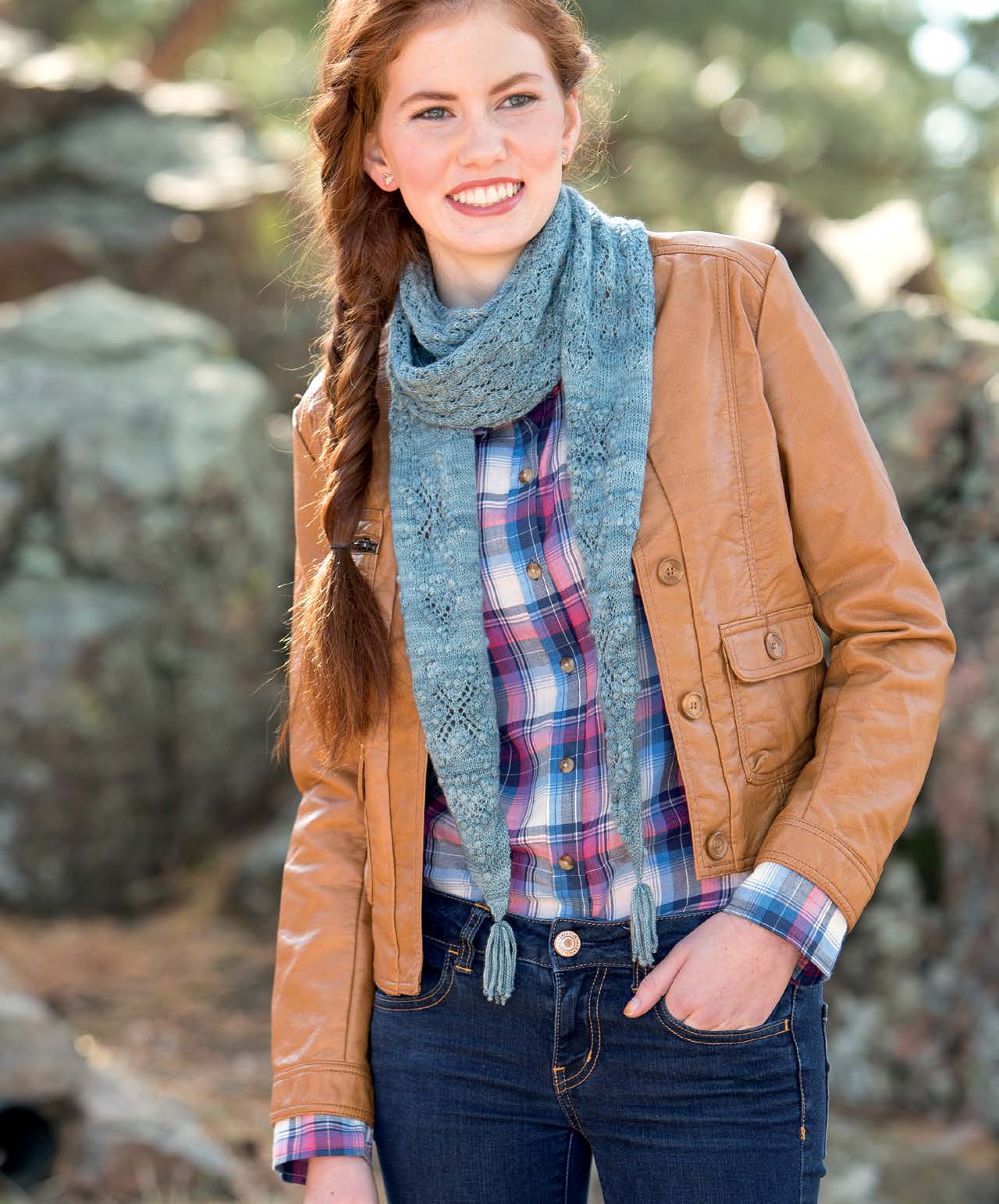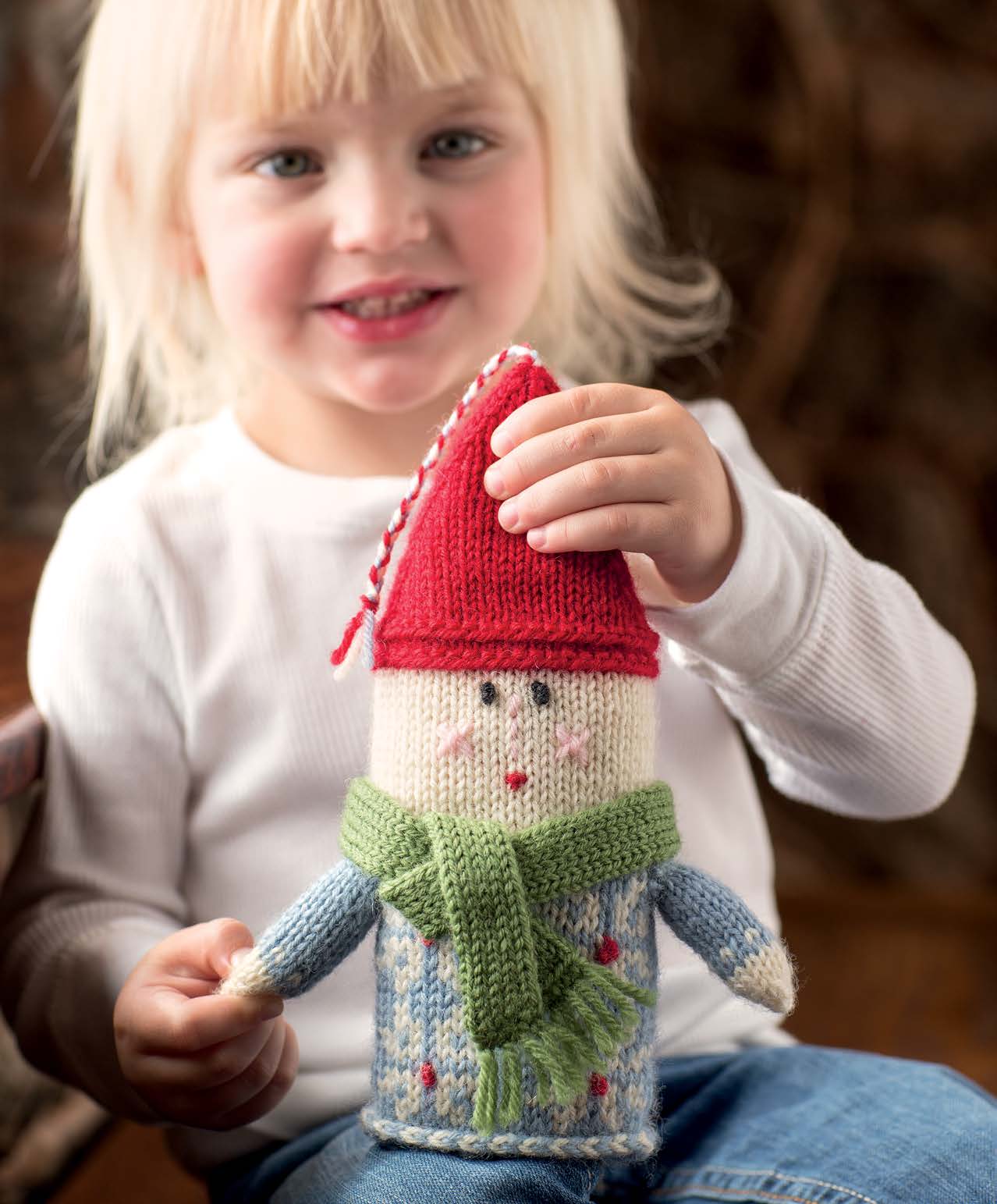Fair Isle is my favorite knitting technique and I've long been a fan of Lucinda Guy, who does color work and folk knitting like no one else. Lucinda has a new book out, First Frost: Cozy Folk Knitting (Interweave/F+W; $24.99) and was kind enough to sit down with me and answer a few questions...
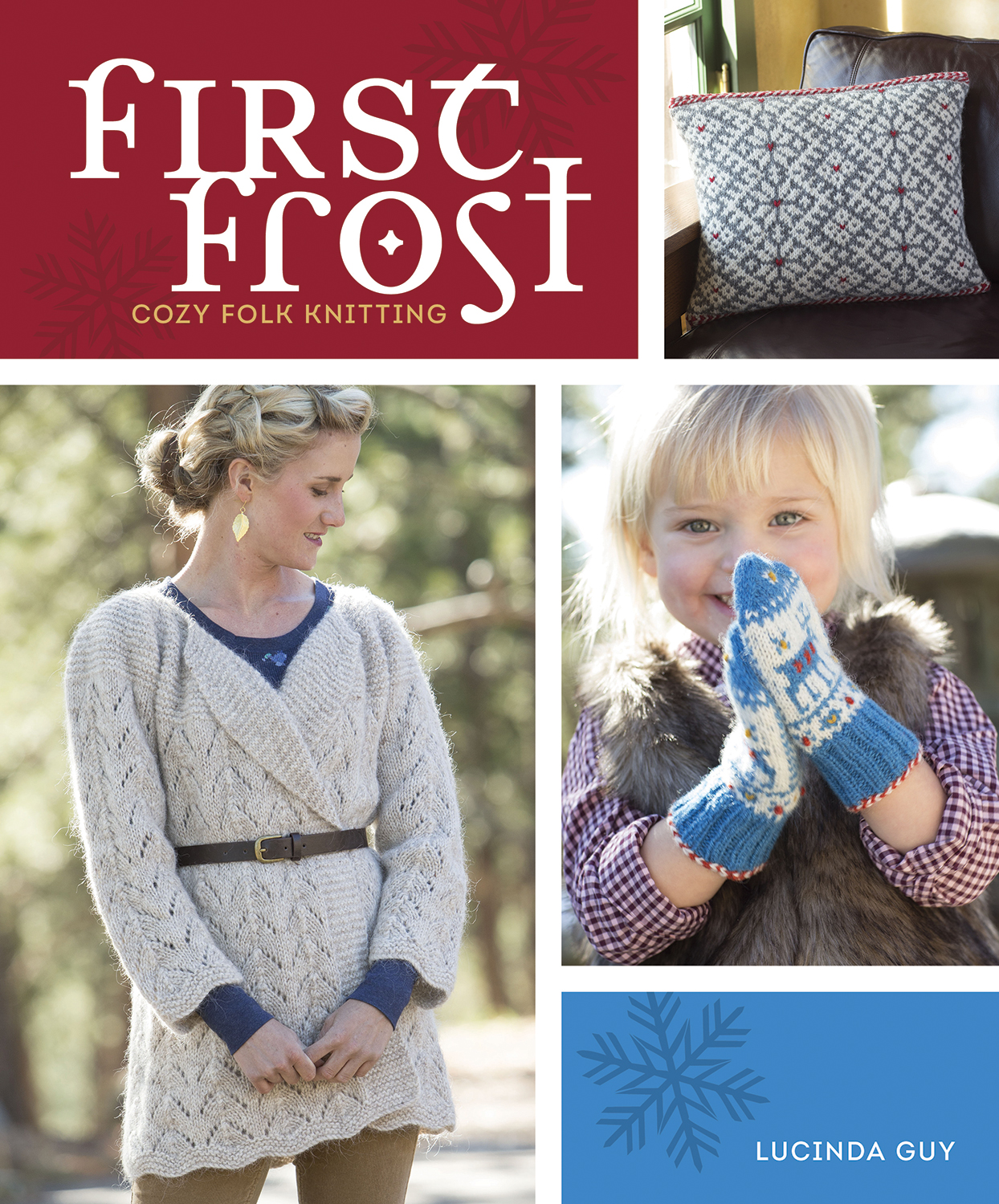
Tanis Gray (TG): I have been a big fan of your designs for years and we worked together many years ago when I was at Vogue Knitting. You seem to have a wonderful affinity for children’s designs. Is designing for children your favorite age group?
Lucinda Guy (LG): Warmth, colour and humour are vital elements in my work and I think that they are often used to the best advantages in my children's designs - I am certainly more than happy to spend my time creating quirky character toys and knits for kids as I can easily incorporate plenty of motifs, traditional techniques, embroidery details and fabulous colours into these small, fun projects.
TG: What made you want to do a book inspired by Scandinavian, Nordic and Baltic designs?
LG: Many years ago, on a school science trip to Iceland and the Faroe Islands, I found myself buying hand-spun hanks of yarn, Faroese socks and an Icelandic cardigan and I was hooked on Nordic textiles and fiber! This passion stayed with me and I have been very lucky to be able to create a trilogy of Northern knitting books exploring traditional Nordic knitting techniques - First Frost: Cozy Folk Knitting is the third of these. I'm always amazed at just how many traditional knitting techniques there are to be discovered and I couldn't resist finding out more about beautiful, Baltic folk knitting for First Frost.
TG: Does folk art dictate the design for you? What motifs did you find the most inspiring?
LG: All sorts of things inspire me, so although folk art is a huge inspiration it is often not my sole focus for design inspiration as I also find folk tales, myths and legends, vintage knitwear, textiles, toys and illustrated children's books equally inspiring and together, all of these elements will help form ideas in my mind. Having said that, I really can spend hours (hours and hours!), in folk art museums researching and photographing the collections. I also find folk art books a mine of information and have a big collection of my own which I am constantly browsing! It's really hard to say which motifs are the most inspiring as one moment I can be bowled over by brightly coloured and embroidered flower and stylised plant motifs and the next I am drawn to simple, two colour knitted geometric motifs, or painted animals and figures...
TG: Do you have a favorite design in this book?
LG: I think it would have to be Risto The Squirrel as not only are you able to make the loveliest of knitted toys, but you will of course also be learning many traditional knitting techniques. First Frost is a celebration of the construction of decorative folk knitting - in particular folk mittens, folk gloves and folk socks - and Risto is knitted using so many of these traditional techniques. He is knitted in the round with 5 double-pointed needles, has a decorative two-colour braided cast on, a twined purl stitch decorative band, stranded colour work patterning, peasant thumb openings for his arms, and decorative twisted-braid details - even his tail is decorated with traditional Estonian mitten fringes!
TG: Intarsia or fair isle?
LG: Both! Fair Isle or stranded colour work projects can be really satisfying to knit as these are techniques which have evolved over time to be an easy, quick and un-fussy way of working with colour and pattern. The Snorri Cushion in First Frost is an excellent example of how straightforward it really can be to work a seemingly complex, Nordic geometric design. However, the single flower motif on the women's Tóka socks, also in First Frost, is a great example of how stunning and creative you can be when using Intarsia - and in this case the very clever technique of Intarsia in the round.
TG: Your color palette is fresh and modern! Do you enjoy the yarn and color choosing process or the designing process more?
LG: For me they go hand in hand - sometimes a yarn will 'speak to me' and I know immediately what I would like to make with it and in which particular colours, and other times I have to search for the right yarn and shades to get the design just right. Often the yarn companies make life really easy for me though by producing the loveliest of yarns in a fantastic range of colours.
TG: What advice do you have for someone wanting to try color work for the first time?
LG: Always try something small first, in not too fine a yarn and be prepared to practice. Find a project which won't use up too much yarn and is quick to make - that way, you can learn by any mistakes and you will be able to get going on a finished project much more quickly. I'd recommend a project like the Little Tomte toy as he's knitted in a sports weight yarn and has a simple two-colour nordic pattern - he is ideal for you to learn and experiment with and ultimately have a lovely gift to give!
TG: Folk knitting doesn’t just mean color work! Tell us more about nupps, lace and texture in your book.
LG: I feel as though I have only just touched on these fantastic techniques really and that there is so much more to explore with nupps, lace, twisted and traveling stitches. Twined knitting has to be one of my all time favorite 'northern' knitting techniques though, and if I'm honest I am really quite evangelical about spreading the word of all things twined! It is such a useful technique to learn as the textural, knitted fabric is so distinctive and very beautiful and I've not met anyone yet who once they have tried it, has not totally fallen in love with it. I also wanted to explore the very practical folk technique of making thrums for insulation and discovered that thrumming is an addictive activity - you know that the more you thrum the warmer you will be when you are out and about in your thrummed mittens!
TG: My favorite design in the book is Little Tomte. Can you tell us more about him?
LG: If you knit the Little Tomte you will be getting a lesson in classic, Scandinavian mitten making. I often find that knitters shy away from knitting mittens as they think that it will be far too tricky and time-consuming and so, I designed the Little Tomte to lure knitters into the world of mitten making by creating a toy rather than a mitten and getting them hooked on the fabulous techniques that way!
TG: What did you find most interesting about your research for this book?
LG: Delving further afield into Baltic knitting traditions was really interesting - I had seen all sorts of hugely inspiring Estonian, Latvian and Lithuanian textiles and folk art and craft when traveling and researching in Scandinavia and I was just so pleased to be able to draw on this research for some of the designs in First Frost.
TG: What’s up next for you?
LG: Nålbindning! I'm really looking forward to teaching on a residential Nordic Knitting weekend in December (here in England), which will include a one day workshop on Nålbindning - I love this technique! I was in Sweden during the summer and was very kingly taught a particular method of Swedish Nålbindning, and I am now very much looking forward to exploring this intriguing constructed textile further!
--------------
Thanks, Lucinda! Check out her new book, First Frost: Cozy Folk Knitting here.
